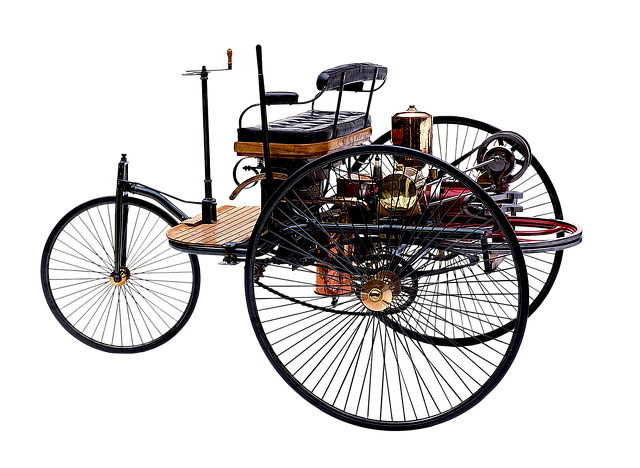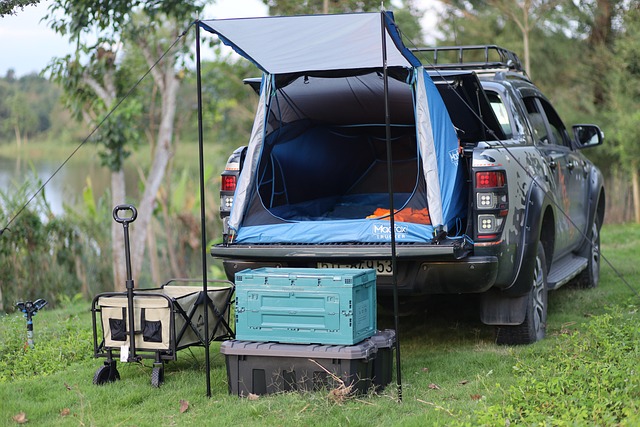Looking to register your car in California? This comprehensive guide walks you through the process, from understanding key requirements for car registration in the Golden State to completing the formalities at the DMV. Learn about gathering essential documents for a successful dvm vin verification, preparing your vehicle for inspection, and transferring the title. We’ll also cover post-registration steps and important considerations to ensure a smooth experience.
- Understand the Requirements for Car Registration in California
- Gather Necessary Documents for DMV Vin Verification
- Prepare Your Vehicle for Inspection and Title Transfer
- Complete the Registration Process at the California DMV
- Post-Registration Steps and Important Considerations
Understand the Requirements for Car Registration in California

Before you can register your car in California, it’s crucial to understand the requirements set by the Department of Motor Vehicles (DMV). One of the key steps is ensuring your vehicle passes a DMV vin verification process, which involves checking the Vehicle Identification Number (VIN) for any discrepancies or potential theft. This is typically done through a digital VIN inspection, where a mobile VIN verifier can play a significant role.
In California, a car’s registration is dependent on several factors, including the vehicle’s age and whether it meets emissions standards. Additionally, you’ll need to provide proof of insurance, complete necessary forms, and pay the associated fees. A mobile vin verification service can simplify this process by offering on-site or remote VIN inspection, ensuring that your car’s history is accurate and up-to-date before registration.
Gather Necessary Documents for DMV Vin Verification

To initiate the car registration process in California, you’ll first need to gather essential documents for the DMV’s VIN (Vehicle Identification Number) verification. This step is crucial as it ensures the vehicle’s history and authenticity. You can prepare by collecting your vehicle’s registration from its previous state, if applicable, along with a valid driver’s license or ID. It’s also wise to have proof of insurance and ownership documents like a title or bill of sale.
A convenient tool that many California residents find useful is the mobile VIN verifier. This service allows you to quickly and easily verify your vehicle’s information through an app, providing peace of mind before heading to the DMV. Alternatively, you can request a paper verification form from the DMV, but using a mobile vin inspection app or service might save time and offer additional benefits like instant results.
Prepare Your Vehicle for Inspection and Title Transfer

Before you can register your car in California, ensure that your vehicle is prepared for the inspection process. This includes having all necessary documents in order, such as proof of insurance and a valid registration from your previous state of residence. Additionally, you’ll need to arrange for a DMV VIN verification, which involves checking the vehicle’s identity using its unique Vehicle Identification Number (VIN). A mobile vin verifier can be a convenient option here, allowing for on-site vin inspection and streamlining the transfer process.
During this phase, prepare your car by ensuring it meets all safety standards and emissions requirements set by California. This may involve repairs or adjustments to critical components like brakes, lights, and exhaust systems. Make sure everything is in top condition before heading to the DMV, as any deficiencies could delay the registration process.
Complete the Registration Process at the California DMV

After gathering all necessary documents, it’s time to complete the registration process at your local California DMV (Department of Motor Vehicles). This step involves a series of checks and verifications to ensure everything is in order. One crucial aspect is the DMV vin verification, where they’ll cross-reference your vehicle’s unique identification number (VIN) with their records to confirm ownership and model details. This process is often streamlined with digital tools, including mobile vin verification apps that allow for quick and convenient inspections.
At the DMV, you’ll need to present proof of ownership, insurance, and identity. A mobile vin verifier can be particularly handy here, as it enables a thorough VIN inspection without the hassle of waiting in line or visiting a physical location. By utilizing these modern solutions, you can expedite the registration process, making it quicker and easier for both new and existing California vehicle owners.
Post-Registration Steps and Important Considerations

After successfully registering your car with the California DMV, there are several crucial post-registration steps to ensure a smooth ownership experience. One essential task is to obtain a Vehicle Identification Number (VIN) verification. This process involves checking the accuracy of your vehicle’s VIN and ensuring it matches the records held by the DMV. You can conduct this vin inspection yourself or utilize the services of a mobile vin verifier, which offers a convenient, on-site check.
Additionally, keep your registration documents up to date and stored securely. It’s important to consider that some vehicle sales may include an optional mobile vin inspection service, which can streamline the verification process for both buyers and sellers. Remember, staying organized and adhering to these considerations will help you maintain compliance with California’s motor vehicle regulations.
Registering a car in California involves understanding the requirements, gathering essential documents for DMV VIN verification, preparing your vehicle for inspection and title transfer, completing the registration process at the California DMV, and taking care of post-registration steps. By adhering to these steps, you can ensure a smooth and efficient car registration experience in the Golden State.



